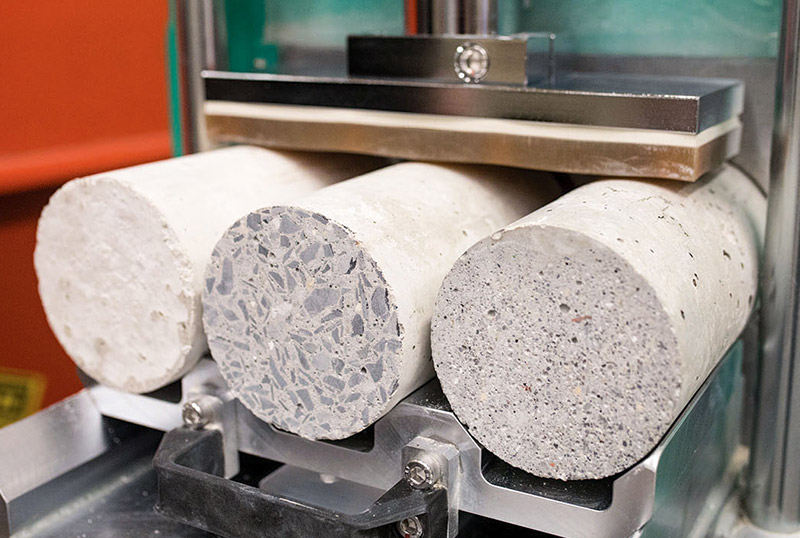| Members of the team include (from left): Mahdis Modaresi, Mertcan Yetkin, Héctor Muñoz-Avila, Shalinee Kishore, Shamim Pakzad, and Alireza Khani. (Photo credit: Christa Neu) |
How can transportation systems be transformed to make communities more livable? That question drives an interdisciplinary team that includes the Institute for Cyber Physical Infrastructure and Energy (I-CPIE), six departments, and three colleges at Lehigh, as well as outside academic institutions, national labs, and industry partners. One of those industry partners is the Santa Clara Valley Transportation Authority (VTA) in California. As part of its Innovative Clean Transit regulation, California has a statewide goal for all public transit bus fleets to be zero-emission by 2040, and the VTA has agreed to be the team’s testing bed. Optimizing the transportation sector is a daunting challenge, says Héctor Muñoz-Avila, a professor of computer science and engineering and co-director of Lehigh’s Institute for Data, Intelligent Systems, and Computation (I-DISC). “Our group continues growing because there are so many technical, societal, and policy aspects to consider. The future will bring megacities, and we must have an integrated solution for the implications of that growth.” Here, team members share approaches to solving the problem.
“To optimize the transportation system, we need to understand how people use the system. We’re trying to understand the reaction of users to changes in that system, such as rerouting or schedule changes. Based on that, we’ll use optimization techniques to design the infrastructure network of stops and terminals, and make the schedule more convenient. When it comes to electric buses, they have limited operational hours, so we need to design the schedule so buses can meet demand while minimizing operating costs. We're also seeing a change in behavior of users like millennials and Generation Z who want to use shared mobility like Uber and Lyft. As engineers, we need to understand these needs and find a way to optimize these modes.”
—Alireza Khani, assistant professor of civil, environmental, and geo-engineering, University of Minnesota
“These microgrids will actually be managed and operated by the transit agency, as opposed to the utility, and that’s not something transit agencies have ever been asked to do. They’ve traditionally operated almost independent of what the power grid is doing. But with electric buses, the system is tied in with the power infrastructure. So agencies are faced with questions like: Where can we charge? How much capacity do we have? How many buses can we support and how does that affect their routes? Our research is in smart cyber infrastructure, how to make power systems smarter by gathering data, processing that data to understand how the systems operate, and figuring out how to make better real-time decisions.”
—Shalinee Kishore, Iacocca Chair Professor of Electrical and Computer Engineering; associate director, I-CPIE
“We’re approaching this from a smart cities perspective, and one aspect of that is addressing the environmental issues connected with transportation. You can make buses zero-emission, but if you burn fossil fuels at the power generation site, then you haven’t solved the emission problem. We envision a microgrid supplied by renewable energy, basically small generation plants distributed across the network. When you need extra energy, you can get it from the main power grid, and when the microgrid generates excess energy, it can give back to the main grid.”
—Shamim Pakzad, associate professor of civil and environmental engineering
“I study cities and how they work for people, and it’s becoming almost irrefutable how much place matters. Not only to physical and mental health, but to economic mobility. A lot of that has to do with how well or not places are connected to the stuff people need, like food or jobs, to clean air, clean water. So we’re looking at where are the households that have cars? Where are the households that don’t have cars? Where are employment rates higher or lower? Basically, how are people arrayed in space and how can we rethink public transit and access for neighborhoods that may be underserved or disconnected from job centers or other resources. It’s an interesting moment to rethink how these systems are designed.”
—Karen Beck Pooley, professor of practice, political science, Lehigh University College of Arts and Sciences
“We’re trying to address the co-optimization of the transportation network and the power network. For now, we’re focused on the after-operation times of the buses—how should they charge and discharge so the load on the power network is within limits, but the vehicles can still operate the next day? We’re trying to come up with the best policy for charging with respect to the current infrastructure. And if we’re leveraging solar farms for the microgrid, you end up charging in the middle of the day, which is when buses operate, so that also poses a problem. Another challenge is coupling how long buses should charge with scheduling demands—picking passengers up, routing, break times. We need a smart scheme to handle all these elements.”
—Mertcan Yetkin, PhD candidate, industrial and systems engineering



